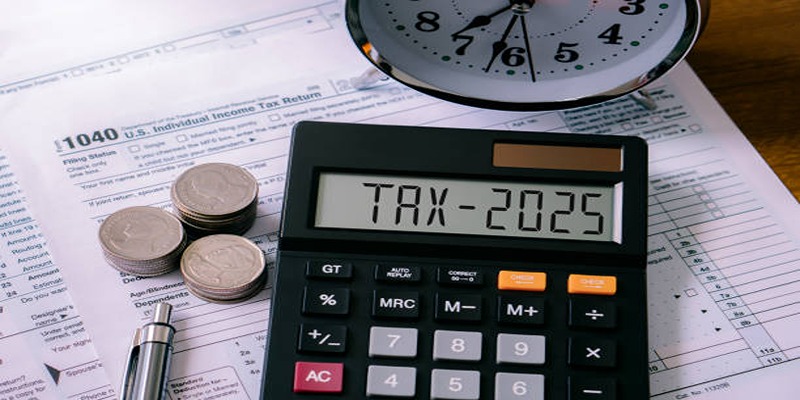Where’s My Refund? A Guide to Checking Your Tax Return Status
Advertisement
Filing taxes can be stressful, and waiting for your refund can make you feel anxious. Whether you’re excited to use it for savings, bills, or a well-deserved treat, knowing when your refund will arrive is important. This guide will help you check the status of your tax refund quickly and easily. With a few simple steps, you’ll have the tools to track your money and understand the process so you can plan ahead with peace of mind.
Understanding the Refund Process

To check your refund status you must first comprehend the refund procedure. Tax refund processing takes the IRS 21 days to complete from the receipt of submitted returns although various circumstances might alter this standard timeframe.
Your choice between paper-filing or e-filing determines when you will receive your refund. Among e-filers who selected direct deposit the refund process takes less time compared to taxpayers who submit paper returns through mail. When you select direct deposit for your refund you receive faster money transfers because the funds automatically settle into your account securely and avoid mail-based transfer risks.
Another factor that can cause delays is errors on your tax return. Simple mistakes like incorrect personal information or math errors can cause your refund to be delayed or even denied. That’s why it’s important to double check all of your information before submitting.
Additionally, if you owe any taxes from previous years, the IRS may use your refund to pay off those debts. This can delay your refund or reduce the amount you receive.
Checking Your Refund Status
Now that you understand the process, it’s time to check the status of your tax return. The easiest and most convenient way to do this is through the IRS website using their “Where’s My Refund?” tool.
Once you enter this information, the tool will show you the status of your refund. You may see one of three updates:
- Return Received: This means that the IRS has received your tax return and it is currently being processed.
- Refund Approved: This means that your refund has been approved and is scheduled to be sent out on a specific date.
- Refund Sent: This means that your refund has been sent to you via direct deposit or mail.
If there are any issues with your return, such as missing information or errors, the tool will provide instructions for how to correct them.
Other Ways to Check Your Refund Status
If you prefer not to use the online tool, there are other ways to check your refund status. You can call the IRS hotline at 1-800-829-1954 or download the IRS2Go app on your mobile device. However, keep in mind that these methods may have longer wait times and may require additional information.
What to Do If There's a Delay
If your refund is taking longer than expected, there could be a few reasons for the delay. The most common reason is errors on your tax return, which can easily be fixed by following the instructions provided by the “Where’s My Refund?” tool.
Another possible reason for a delay is that the IRS is reviewing your return for accuracy. This can happen if you claim certain deductions or credits, or if your return raises any red flags.
In some cases, there may be an issue with your personal information or direct deposit information. If this happens, the IRS will contact you by mail to request additional information or to verify your identity.
Understanding Your Refund Amount
It’s also important to understand the amount of your refund and what it represents. Your refund is the difference between the taxes you owe and the amount that was withheld from your paychecks throughout the year. If you receive a large refund, it may be a sign that you had too much withheld and could adjust your withholding for next year.
Additionally, if you received any additional income or made major life changes during the tax year, this can also impact your refund amount. It’s always a good idea to review your tax return and make sure all information is accurate and up-to-date.
Plan Ahead for Next Year
Now that you’ve checked the status of your refund and received it, it’s a good time to start planning for next year’s tax season. Consider keeping track of your income and expenses throughout the year to make filing your taxes easier. You can also speak with a tax professional or use online tools to estimate your tax liability and adjust your withholding accordingly.
Tips for a Smoother Refund Experience

To ensure a smooth and stress-free refund experience, here are some tips to keep in mind:
- File your tax return early: The earlier you file, the earlier you’ll receive your refund.
- Double check all information: Make sure all personal information and numbers are accurate before submitting.
- Choose direct deposit: This is the fastest and most secure way to receive your refund.
- Keep track of changes throughout the year: If there were major changes in your life or income, make sure to update your tax return accordingly.
By following these tips and understanding the process of receiving a tax refund, you can have peace of mind knowing when to expect your money.
Conclusion
Preparing for tax season and understanding the refund process can save you time, reduce stress, and ensure you get the reimbursement you’re entitled to. By staying organized, filing early, and using the available tools and resources, you can make tax season a manageable and smooth experience. Taking proactive steps today will not only help you maximize your refund but also set the foundation for better financial planning in the future.
Advertisement












